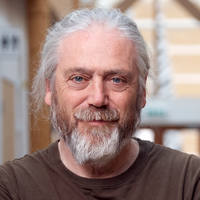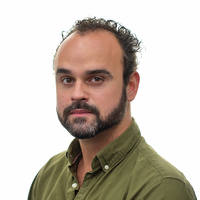
Aquatic Symbiosis Genomics Project
Read our Blog story
Discover how we are using genomes to fight reef loss
Laying the foundations for future conservation
The Aquatic Symbiosis Project, jointly funded by the Wellcome Sanger Institute and the Gordon and Betty Moore Foundation, seeks to provide the genomic foundations needed by scientists to answer key questions about the ecology and evolution of symbiosis in marine and freshwater species, where at least one partner is a microbe.
By applying the latest genomic techniques and tools to 1,000 aquatic species, representing 500 symbiotic relationships, the data will guide future studies and help to inform conservation efforts.
The key role of symbiosis in ecology, evolution and conservation
Symbiosis covers a spectrum of relationships, from temporary to lifelong, and from mutually beneficial – such as between coral and algae – to exploitative – between parasite and host. These relationships are hugely important and have evolved independently many times. For example coral provides species-rich reef systems around the world, while almost one-third of all complex species are parasites.
Yet little is known about the underlying genetics of these complex relationships between species, how symbiotic partners adapt to one another over time, how resilient these partnerships are and how they respond to disruption. The aims of the Aquatic Symbiosis Project are to provide gold-standard reference genomes for these symbiotic species to then allow genomic exploration and understanding of how species adapt to survive.
Evolution is often characterised as a fight for survival, with individuals pitted against each other in the race to spawn the next generation. However, collaborations – where two distinct organisms build a relationship that is beneficial – are widespread. Every plant carries within it the functional remnants of a once free-living light-harvesting bacterium, and these chloroplasts are what allow plants to use sunlight to fix carbon. The chloroplast-plant collaboration is billions of years old, but new collaborations have evolved many times. Similarly the collaboration between sessile jellyfish relatives and free living photosynthetic algae we call corals are the foundations of hyperdiverse reef ecosystems where tens of thousands of species thrive.
These symbioses – sym: together, biosis: living – are key to the functioning of the living world. Symbioses range from mutually beneficial to one sided (also described as “parasitism”) and from temporary or facultative to essential. As two once-independent species evolve to collaborate (or be exploiter and exploited) they will adapt to communicate with each other, to exchange nutrients and to accommodate to each other’s physiologies. This evolutionary change is delivered from and written in the genomes of the symbionts.
Collaboration and Openness
The Tree of Life programme at the Sanger Institute has embarked on an ambitious programme to sequence the genomes of species involved in a wide range of symbioses in marine and freshwater ecosystems. Funded by the Gordon and Betty Moore Foundation’s Symbiosis in Aquatic Systems Initiative and working with global partners, we will collect a wide range of symbiotic organisms (protists, plants and animals in the main), focused on specific scientific questions and generate reference-quality genomes for all species in each symbiosis.
We will collaborate with up to ten Hubs, experts in the field of symbiosis, and they will nominate the species we will sequence. The sequencing will follow the lead of our Darwin Tree of Life project, using long read and long range data, but the assembly process will be focused on delivering multiple independent genomes from the same sample. Using transcriptome data we will annotate the genomes, and release these openly through the European Nucleotide Archive, who are developing a dedicated data portal for the project.
In collaboration with all project partners we will analyse the genomes to answer long-standing questions in symbiosis biology. To build the symbiosis genomics community we will develop and deliver a collaborative programme of training in genomics and bioinformatics for early career researchers to build capacity to fully exploit the genome sequences.
Just as the symbiotic corals are the essential foundations of flourishing reef ecosystems, we intend that these new genome resources will be the lasting foundation of a new, flourishing ecosystem of functional genomics and population genomics of aquatic symbioses.
Phase 1 - Four Pilot Aquatic Symbiosis Hubs
Phase One of the Aquatic Symbiosis Genomics project will create the essential research infrastructure and capacity of the scientific community to analyse genomic information in relation to the development and adaptation symbiosis.
Four international teams of collaborators with expert knowledge in symbiosis (see below) are working with the Sanger Institute’s Tree of Life Programme to generate reference genomes, develop new laboratory techniques and bioinformatic approaches.
Each collaborating hub will submit samples for around 100 genomes for sequencing and analysis by Sanger Institute scientists.
The first four Hubs are:
Sponges as symbiont communities
Ute Hentschel Humeida (GEOMAR Helmholtz Centre for Ocean Research, Kiel, Germany) and colleagues study sponges and their diverse associations with microbes, often based on mutual nutritional support. Genome sequencing will define the different sets of organisms involved in sponge-microbe symbiosis, and help understand how the collaborations have arisen, how they are maintained and how they contribute to major geochemical cycles in the oceans.
Photosymbiosis in marine animals
Jose Victor Lopez (Nova Southeastern University, Florida, USA) is the nucleus of a group interested in how animals have established symbiosis with light-harvesting algae and other microbes – photosymbiosis. Working on corals, molluscs, flatworms and others, they will use the complete genome sequences of these astonishing “plant-animals” to show how the animals have rearranged the way they live to rely on food directly from their partners.
Coral symbiosis sensitivity to environmental change
Michael Sweet (University of Derby, UK) and colleagues work on the sensitivity of corals to environmental change, in particular the global phenomenon of “bleaching”, where the coral loses its photosynthetic algal partner. The coral then turns bright white, and may ultimately die. Mass bleaching events are threatening the future of reef ecosystems worldwide. The Hub will compare bleaching-resistant colonies to those which are more sensitive from the same species, with the goal of shining some light onto symbiotic processes which occur and allow for this natural variation in the response of corals facing the same stress. A greater understanding may allow mitigation of the effects of climate change and assist reefs to evolve in the face of continuing and increasing stressors.
Evolution of new symbioses in single-celled eukaryotes
John Archibald (Dalhousie University, Canada) brings together a team working on symbioses between different kinds of single celled organisms. The symbionts cooperate through photosymbiosis and nutritional or metabolic symbiosis. Understanding how these organisms work together will both illuminate dark areas of the tree of life and reveal how symbiosis can evolve multiple times.
Phase 2 - Six Additional Hubs
Following a very competitive open call for applications to form one of the Phase 2 hubs, we are delighted to welcome 6 new collaborations to the project.
The Phase 2 hubs are:
Ciliates as models for symbiosis: Using genomic analyses of functionally diverse symbiotic associations with parallel origins to gain insights into basic evolutionary principles of symbiosis
Led by Patrick Keeling at the University of British Columbia
Genomic signatures behind the origin of multiple cephalopod symbiotic organs
Led by Oleg Simakov at the University of Vienna
Bacterial symbiosis as an adaptation to extreme environments in annelid worms
Led by José M. Martín-Durán at Queen Mary University of London
What makes a lichen? Evolution and ecology of fungal-algal symbioses across marine and freshwater environments
Led by Nick Talbot at the Sainsbury Laboratory
Symbiosis as a driver for molluscan diversity
Led jointly by Jillian Petersen (University of Vienna), Roxanne Beinart (University of Rhode Island) and Julia Sigwart (Senckenberg Research Institute)
Symbioses in 3D: diversity and dynamics in pelagic symbioses across the tree of life
Led jointly by Anne Thompson (Portland State University), Kelly Sutherland (University of Oregon) and Michael N Dawson (University of California, Merced)
Open Data Release
The Moore Foundation-funded Aquatic Symbiosis Genomics Project is a project of the Tree of Life programme at The Wellcome Sanger Institute. We are working with a wide range of collaborators to generate reference genome data for many symbiotic organisms from marine and freshwater ecosystems.
All sequence data generated by the project will be openly available for reuse. All raw and assembled data will be deposited in the European Nucleotide Archive (ENA) public database and from there, into the other International Nucleotide Sequence Database Collaboration (INSDC) nodes: GenBank and the DNA Data Bank of Japan. In the spirit of collaboration and community-building, we strongly encourage research hubs to make biological materials available to others for post-genomic work. We expect collaborators will deposit samples relevant to the sequenced species and individuals into national and local collections (including cryorepositories). Where samples derive from cultured organisms, collaborators should, where feasible, make cultures/organisms available on request to other research labs.
The Sanger Institute project team encourages community reuse, and project data will be released freely for reuse for any purpose upon deposition in ENA. Our intention is to rapidly publish all submitted assemblies as Wellcome Open Research notes, which can be cited (see, for example, Daniel Mead, Kathryn Fingland, Rachel Cripps et al. [2020]. The genome sequence of the Eurasian red squirrel, Sciurus vulgaris Linnaeus 1758. Wellcome Open Research. DOI: 10.12688/wellcomeopenres.15679.1). We scientists who use the genome sequence data give appropriate acknowledgement and citation in their own publications.
The Sanger Institute team will also make available for download intermediate data and assemblies via a project website. These data and assemblies are provided “as is” as a service to the community, and we make no assurances as to their completeness or quality. Please note that these assemblies will be improved before final submission to ENA and we cannot guarantee persistence or availability of intermediate files in the long term. We strongly recommend that published analyses are based on data and assemblies submitted to ENA/INSDC. The genome sequences submitted to ENA by the Sanger Institute will be presented through the EBI Ensembl database, and the annotations presented through Ensembl should be regarded as the official versions.
Sanger people

Professor Mark Blaxter
Head of the Tree of Life Programme and Senior Group Leader

Haoyu Niu
Project Support Officer

Dr Victoria McKenna
Project Manager
Previous Sanger people

Rebecca O'Brien
Senior Project Manager

Catherine McCarthy
Compliance Manager

Luke Lythgoe
Communications Specialist
External Contributors

Professor Ute Hentschel Humeida
GEOMAR Helmholtz Centre for Ocean Research, Kiel, Germany

Jose Victor Lopez
Nova Southeastern University, Florida, USA

Michael Sweet
University of Derby, UK

John Archibald
Dalhousie University, Canada

Patrick Keeling
University of British Columbia, Canada

Oleg Simakov
University of Vienna, Austria

José M. Martín-Durán
Queen Mary University of London, UK

Nick Talbot
The Sainsbury Laboratory, UK

Jillian Petersen
University of Vienna, Austria

Roxanne Beinart
University of Rhode Island, USA

Julia Sigwart
Senckenberg Research Institute, Germany

Anne Thompson
Portland State University, USA

Kelly Sutherland
University of Oregon, USA

Michael N Dawson
University of California Merced, USA
External partners and funders
External
The Gordon and Betty Moore Foundation
The Gordon and Betty Moore Foundation fosters path-breaking scientific discovery, environmental conservation, patient care improvements and preservation of the special character of the Bay Area
External
EMBL-EBI European Nucleotide Archive
The archive is developing a dedicated data portal for the project
Related groups
Affiliated Sites
External